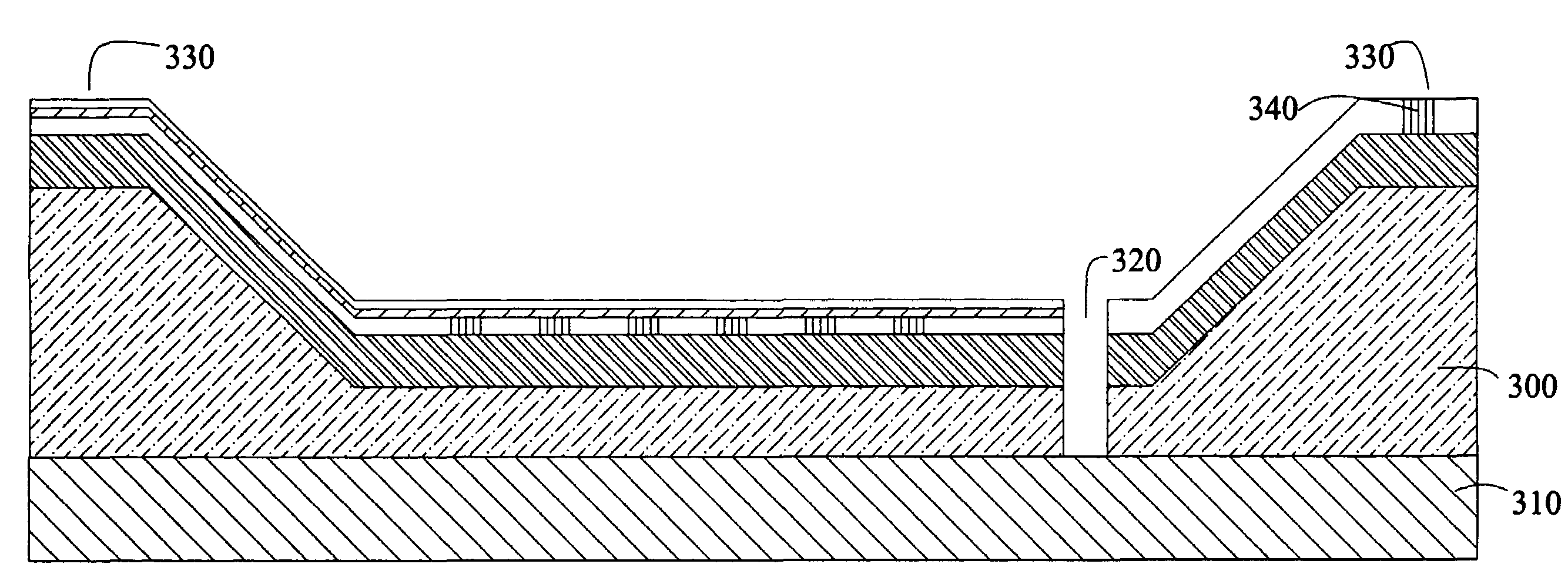Digital parallel electron beam lithography stamp
a technology of electron beam and electron beam, applied in the field of digital parallel electron beam lithography stamp, can solve the problems of limiting the speed of production, affecting the efficiency of production, and limiting the technique, so as to improve the environmental control, improve the degree of addressability, and improve the effect of density array
- Summary
- Abstract
- Description
- Claims
- Application Information
AI Technical Summary
Benefits of technology
Problems solved by technology
Method used
Image
Examples
Embodiment Construction
I. Manufacturing of Digital PEBLS
[0020]FIG. 1a-1d illustrate the side view of one embodiment for manufacturing the Parallel Electron Beam Lithography Stamp (PEBLS). FIG. 2a-2d illustrate the top view of this embodiment for manufacturing the PEBLS.
[0021]In FIGS. 1a and 2a, an insulated substrate 100 is provided upon which a first wiring pattern including parallel conductive wires 110 is formed using either conventional optical lithographic approaches or, for finer resolution patterning, using e-beam lithography, nanoimprint lithography, dip pen nanolithography, etc. The material of the wiring pattern includes catalytic material such as metallic nanoparticles of Fe, Ni, Co, or Mo.
[0022]In FIGS. 1b and 2b, an anodic aluminum oxide (AAO) template 120 is formed on the substrate 100 with the wiring pattern using known techniques such as disclosed by the articles of Kim et al. “Growth of carbon nanotubes with anodic aluminum oxide formed on the catalytic metal-coated Si substrate” (Diamond...
PUM
 Login to View More
Login to View More Abstract
Description
Claims
Application Information
 Login to View More
Login to View More - R&D
- Intellectual Property
- Life Sciences
- Materials
- Tech Scout
- Unparalleled Data Quality
- Higher Quality Content
- 60% Fewer Hallucinations
Browse by: Latest US Patents, China's latest patents, Technical Efficacy Thesaurus, Application Domain, Technology Topic, Popular Technical Reports.
© 2025 PatSnap. All rights reserved.Legal|Privacy policy|Modern Slavery Act Transparency Statement|Sitemap|About US| Contact US: help@patsnap.com



